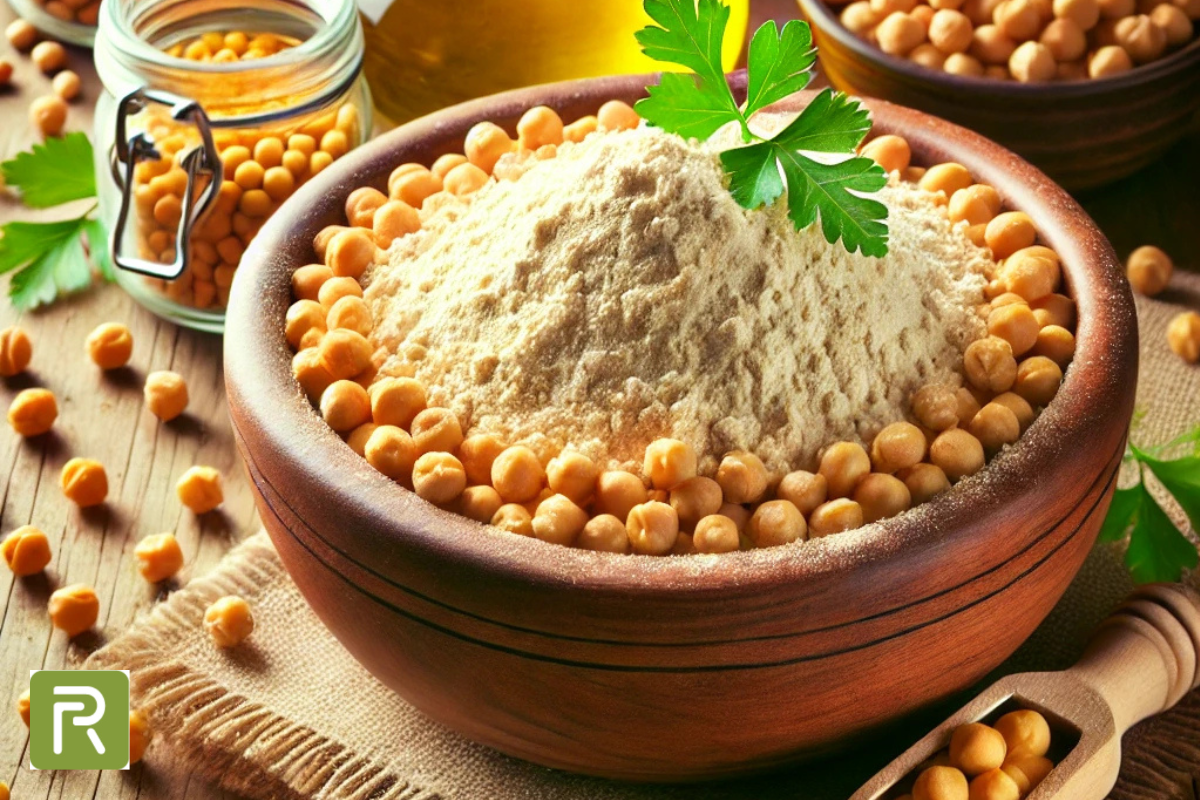Gram flour, also known as chickpea flour or besan, is a versatile and nutrient-packed ingredient commonly used in various cuisines worldwide. Derived from ground chickpeas, gram flour is not only gluten-free but also loaded with essential nutrients. Its ability to enhance health while adding flavor makes it a favorite among health enthusiasts and culinary experts alike.
What Makes Nutrition in Gram Flour Special?
The nutrition in gram flour is truly remarkable, offering a variety of health benefits that support overall well-being.
- Rich in Protein: It serves as a plant-based protein source, perfect for vegetarians and vegans.
- High in Fiber: Supports digestion and promotes a feeling of fullness.
- Loaded with Vitamins and Minerals: Contains magnesium, iron, and B vitamins essential for energy and immunity.
Key Nutrients in Gram Flour
Protein Powerhouse
Gram flour is an excellent source of protein, with about 22 grams per 100 grams. This makes it a great addition for muscle building and repair.
- Tip: Add gram flour to your daily meals to boost your protein intake effortlessly.
High Dietary Fiber
The fiber content in gram flour aids digestion and keeps blood sugar levels stable.
- Benefit: Helps prevent constipation and supports gut health.
Rich in Iron and Magnesium
Iron in gram flour helps combat anemia, while magnesium supports heart health and muscle function.
Low Glycemic Index
With a low glycemic index, gram flour is ideal for managing diabetes and maintaining steady energy levels.
Health Benefits of Gram Flour
- Weight Management
The high fiber and protein content promote satiety, reducing the chances of overeating. - Supports Heart Health
Its magnesium content helps regulate blood pressure, while its lack of trans fats makes it heart-friendly. - Gluten-Free Alternative
For those with gluten intolerance or celiac disease, gram flour is a perfect substitute for wheat-based flours. - Boosts Skin Health
Traditionally used in face masks, gram flour helps exfoliate and brighten the skin naturally.
Ways to Use Gram Flour in Your Diet
1. Pancakes and Crepes
Create savory or sweet pancakes using gram flour as the base.
- Recipe Tip: Combine gram flour with water, spices, and veggies for a quick and healthy breakfast.
2. Thickening Agent
Use gram flour to thicken soups, curries, or sauces for a creamy texture.
3. Baking Substitute
Replace regular flour with gram flour in recipes for a nutty flavor and gluten-free goodness.
4. Snacks and Fritters
Prepare traditional snacks like pakoras or use it to coat vegetables and fry for a crispy treat.
Culinary Advantages of Gram Flour
- Versatile Ingredient: It blends seamlessly into sweet and savory dishes.
- Extended Shelf Life: Store in an airtight container, and it stays fresh for months.
- Easy to Use: Mixes well with water to form batters for various recipes.
Tips for Choosing and Storing Gram Flour
- Opt for Fresh Flour: Check the manufacturing date for freshness.
- Proper Storage: Keep gram flour in a cool, dry place to avoid moisture.
- Check for Purity: Choose organic, additive-free gram flour for the best quality.
FAQs
Is gram flour good for weight loss?
Yes, its high fiber and protein content promote satiety, helping in weight management.
Can gram flour be used daily?
Absolutely! Incorporate it in moderation as part of a balanced diet.
What are some easy gram flour recipes?
Try gram flour pancakes, fritters, or use it as a thickening agent in soups and curries.
Is gram flour safe for diabetics?
Yes, its low glycemic index makes it suitable for managing blood sugar levels.
What are the skincare benefits of gram flour?
It exfoliates, brightens, and cleanses the skin when used as a natural face mask.
How does gram flour compare to other flours?
Gram flour is higher in protein and fiber while being gluten-free, making it a healthier choice.




